Shoe Stories – The history of shoes is perhaps a topic that is rarely discussed anywhere. Apparently, this fashion item has a long history. In fact, the history of shoes is known since 3500 years BC. So, what is the history and evolution of shoe models from time to time?
It turns out that there are more than 10 shoe models that have existed from the past until now. If now we look at people, including public figures, who have expensive shoes and the latest models such as sneakers, in the past shoes were not a fashion but rather a necessity at a certain time. Here’s the complete history of the shoe.
Definition of Shoes
Shoes are one type of footwear that is still worn by humans today. In the past, this footwear was made for specific needs. For example, in ancient times in the northern regions, it is alleged that ancient people made footwear that was exactly the shape of shoes which was intended to make it easier for them to walk on snow and protect their feet.
Nowadays, there are various models of shoes that are worn. Shoe grouping is usually done based on function or type, such as formal shoes (for attending parties), casual shoes, dance shoes, sports shoes, work shoes, orthopedic shoes (for body growth therapy or treatment) and other types of shoes such as traditional shoes. In essence, the type of footwear that usually consists of parts of the sole, heel, hood, laces, and tongue is called a shoe.
History of Shoes
The most ancient shoes were discovered by archaeologists. They calculated based on their research that the first shoes had existed thousands of years before Christ. But until now, this one footwear is still used. So, how is the history of shoes and the various changes in their models? Quoted from historia.id , Here is the information.
1. Oetzi Shoes
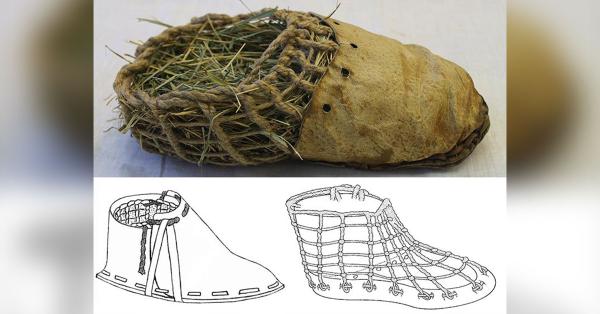
In the Alps, Austria in 1991 archaeologists discovered a mummified man named Oetzi. He comes from the Stone Age, estimated to have died around 5,300 years ago. Interestingly, he was still wearing his leather shoes.
The shoes appeared to be designed for walking through snow. It is also waterproof and has a wide sole. The sole is made of bearskin. The upper part is made of deerskin. Then the nets are made from tree bark. The straw was placed around the foot inside the shoe, so its function was similar to modern socks. The stitches were small and not very reliable considering the tools people had at that time.
2. Armenian Leather Shoes
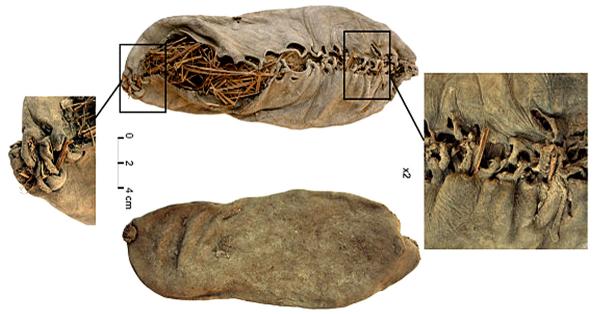
The oldest leather shoes were discovered during archaeological excavations in the Armenian Caves. These shoes were found in good condition. Radiocarbon dating shows these shoes date from around 3,500 BC, namely the Metal Age in Armenia.
Found filled with grass, its shape looks like moccasins, namely shoes without heels made of soft-textured leather. Likewise, these shoes are made from a single piece of cowhide. On the front and heel there are stitched leather straps.
When worn, it covers the heel and toe areas. The shoes could have belonged to a man or a woman, as not enough is known about Armenian feet at that time. When compared to modern foot sizes, they are more similar to women’s, namely 7 in US size.
3. Egyptian shoes
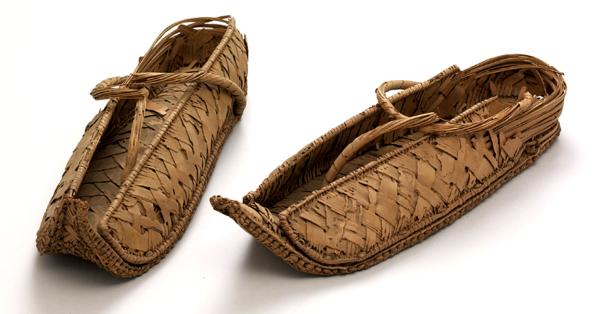
These boat-shaped flat open shoes are made from woven reeds. The rope is also made of long, thin reeds, which are covered by wider strips of reed. This practical shoe shape from Ancient Egypt 1550 BC continued in the same style in the 19th century.
4. Hemp Shoes

Dating from 68-56 BC, these shoes were made from multiple layers of hemp plants sewn together in a manner similar to a patchwork or quilting technique. Stitching also has a decorative function. This is one of several shoes found during archaeological excavations on the ancient silk route, northern Dunhuang, China. An example of this can also be seen in the legs of the Xi’an terracotta soldiers.
5. Foot Brace Shoes

These kinds of tiny shoes were worn by women in imperial China at least since the Song Dynasty in the 10th century AD. Since childhood, their feet were bandaged to prevent foot growth and remain 8 cm in size. Foot splinting became common in women of higher social status. This practice was banned in 1911.
6. Poulaine Shoes

In the 12th century, European shoemakers began making pointed-toed shoes. This style of shoe was popularly called the poulaine. They had a very narrow pointed toe and were made of leather. The shape became more extreme in the late 14th century. They wore narrow shoes with the toe pointed upwards.
At that time many people became victims of fashion. Some royals partied in shoes so long and narrow that they were forced to tie the ends of their shoes to elastic bands placed around their knees. In the British court especially, the nobility followed this style to the extreme. As a result, they have difficulty walking. This led to the issuance of regulations governing the length of shoes.
7. Shoes from 1,500 AD
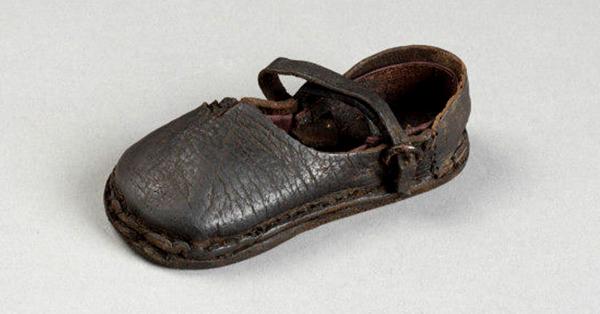
In the early 1500s, in England you could find various types of shoes. However, square-toed shoes are the most popular. However, it is different for children, their shoes are round-toed, often made of leather, with one hook strap at the top that runs from one side to the other. This shoe model is still found today, especially as a children’s shoe model.
8. Cocor Bebek Shoes
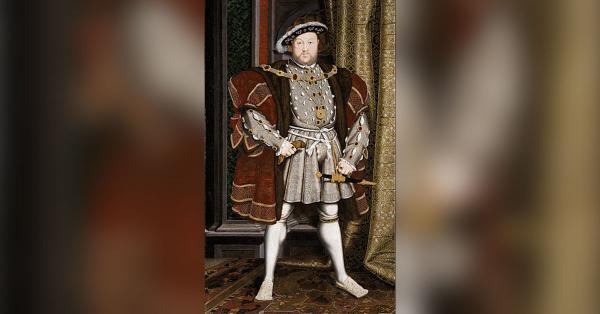
In the 16th century shoes became shorter with a rounder toe, and the cocor duck model entered the fashion scene. For example, a painting from 1536 shows King Henry VIII of England posing in the latest fashions at that time. He wore Cocor Duck shoes with a slash patterned upper layer. These shoes are padded to keep their shape wide.
9. Heels

During the Renaissance period, kings in Europe often wore very high heels to demonstrate their supremacy. They can also still walk gracefully in puddles of water, because the height of their heels can sometimes reach 30 cm. These shoes are the prototype of modern platform shoes. King Louis XIV of France is said to have played an important role in making high heels popular.
10. Chopine

Chopine is a type of platform for women that was popular in the 15th, 16th and 17th centuries AD. Chopine was popularly worn in Venice by courtesans and noble women from the 1400s to the 1700s. Initially these shoes were used like clogs, namely to protect shoes and clothes from mud and street dirt. Apart from its practical function, the height of the chopine heel is a symbolic indicator of the wearer’s social status. The higher the shoes, the higher the status.
During the Renaissance era, chopine became an expensive item. Some can be more than 50 cm high. In 1430, the height of the chopine was limited by Venetian law to three inches. However, this rule is ignored.
11. Baroque shoes

As an art, this style developed in Europe around the 16th to 18th centuries. It is characterized by a complex style and a penchant for grandeur and luxury. This style also influences fashion, especially shoe models. Velvet, satin, silk, floral decorations and gemstones colored the shoes of this era for both men and women. Great skills are also needed for shoemakers.
There were no factory products in this era, because each pair of shoes was made by hand. Especially when Charles II was restored to the throne in 1660 there was another change in fashion. Red heels became popular in England. Primarily, this shoe style is to show status, both for women and men.
12. Boots
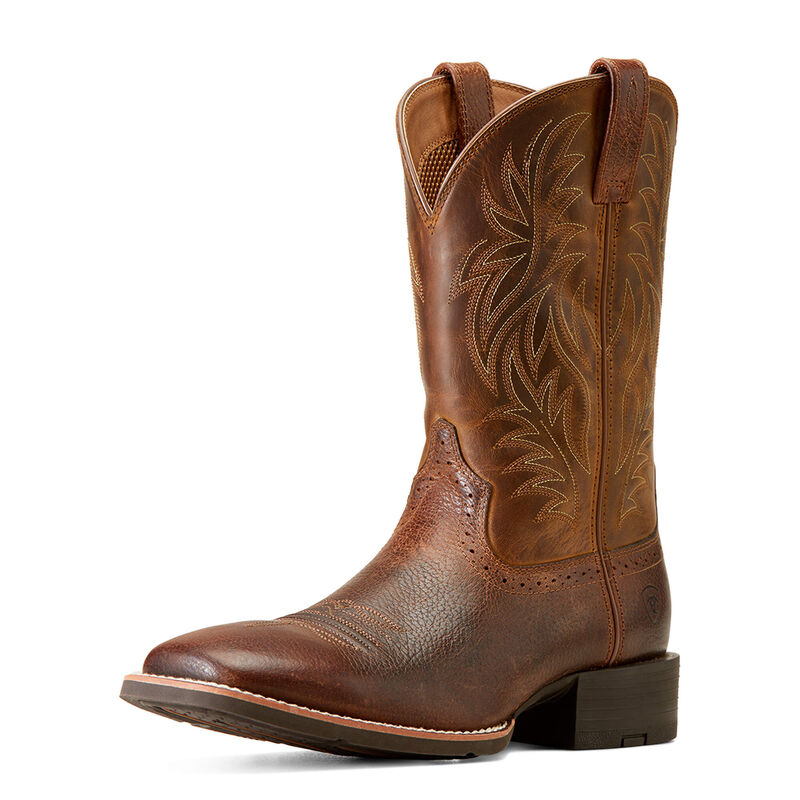
During the 18th century, the Napoleonic Wars took place. However, once the war passed, in the 19th century shoe models became more practical. This then differentiated men’s and women’s shoe models and marked the end of high heels for men because that model was more popular with women. Meanwhile, men prefer practical ones, such as leather boots.
13. Modern Shoes

New trends emerged in the second half of the 20th century with the rise of American pop culture which was associated with the desire to be different, unique and part of a particular subculture. Cheaper raw materials, new structures and different lifestyles changed the image of men and women.
Luxurious, high-quality footwear is being transformed by trendy, ever-changing color footwear. Hollywood actors and singers greatly influence the popularity of certain shoe models. The band The Beatles, for example, popularized Chelsea shoes, actress Audrey Hepburn popularized kitten heels.
Those are 13 shoe models that have evolved over time. Hopefully this unique and interesting shoe history can broaden your insight. If you are looking for various leather products , visit aleta.id.
